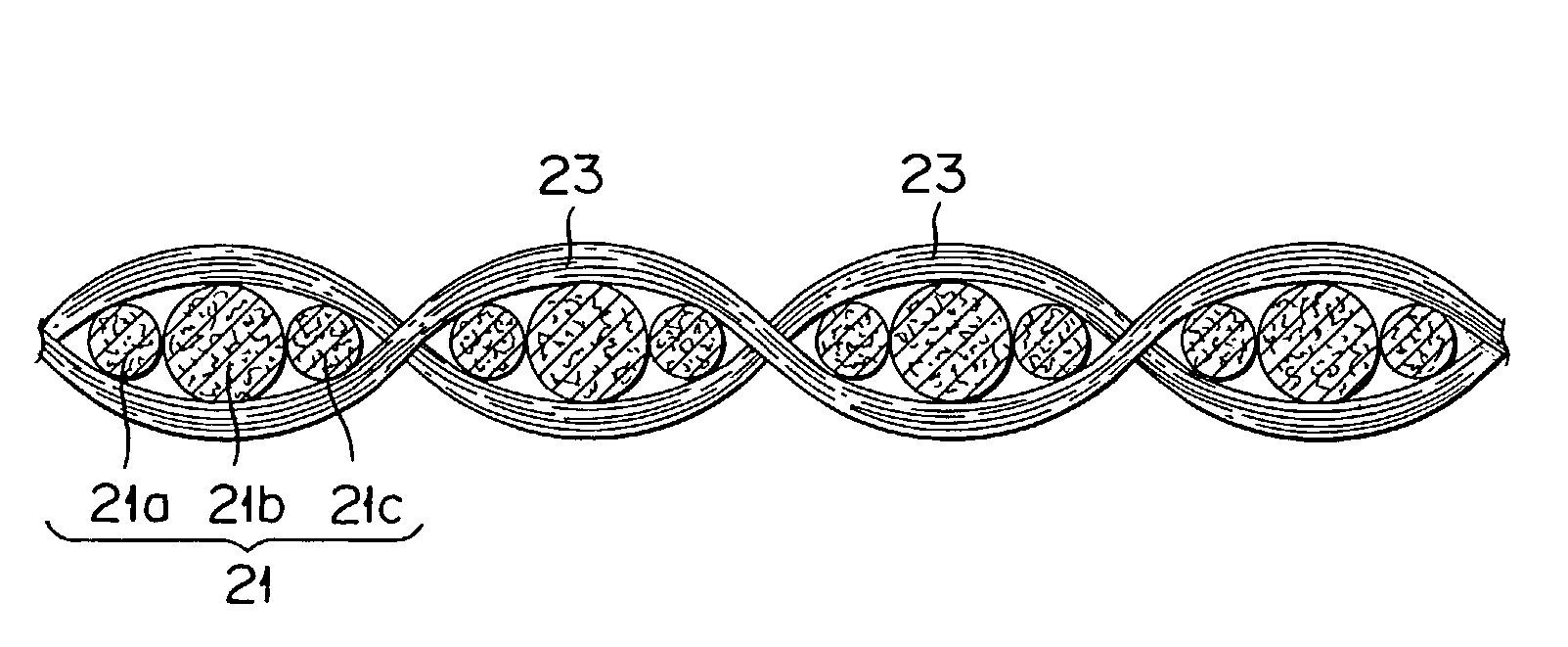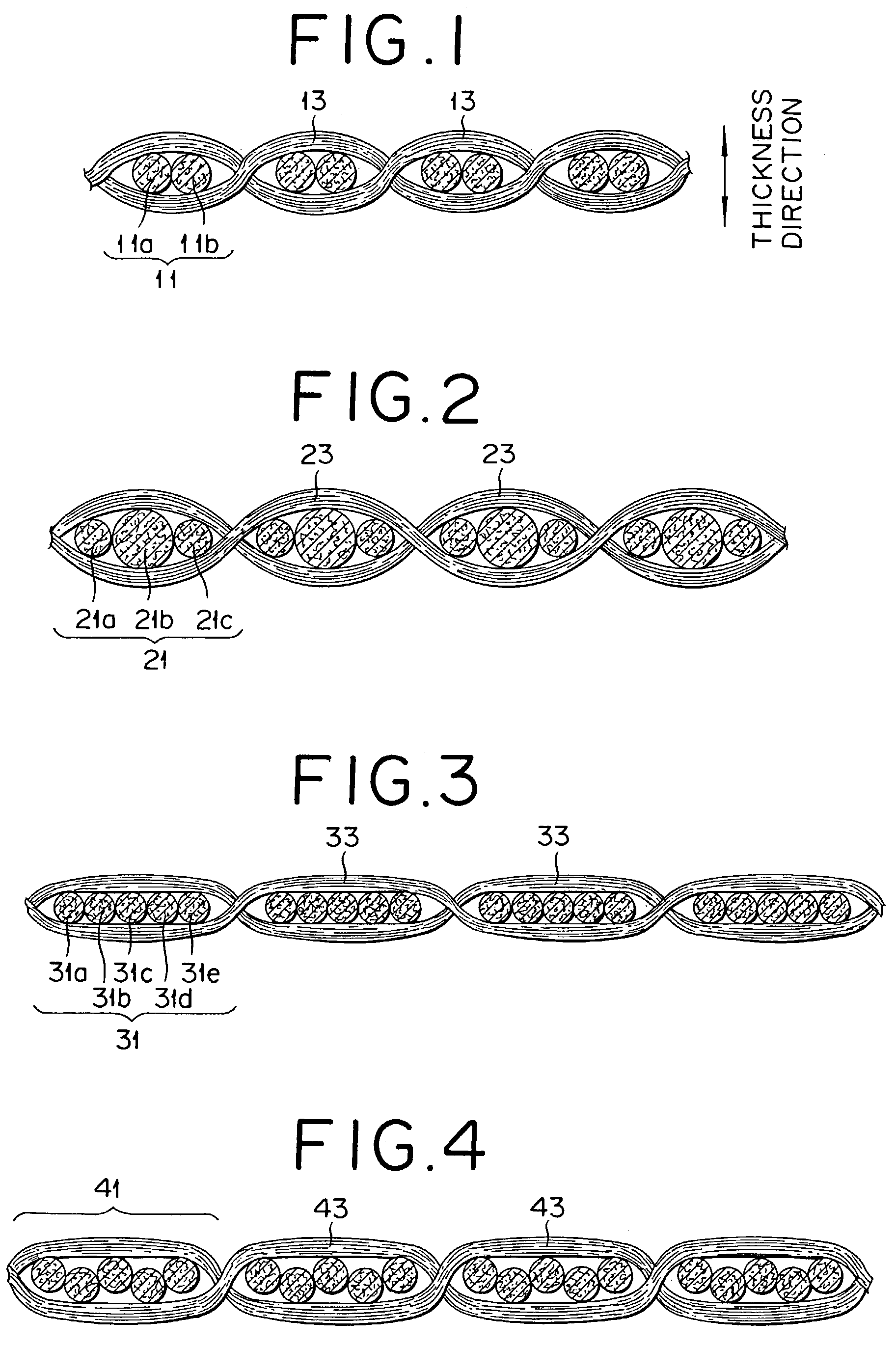Woven tubing for stent type blood vascular prosthesis and stent type blood vascular prosthesis using the tubing
- Summary
- Abstract
- Description
- Claims
- Application Information
AI Technical Summary
Benefits of technology
Problems solved by technology
Method used
Image
Examples
example 1
[0071]A tubing of plain weave design 24 mm in inside diameter was formed by hollow weave using an untwisted multifilament of polyethylene terephthalate having a single filament size of 18 dtex and formed of two single filaments to a total size of 36 dtex (the present multifilament) for warps and a multifilament of polyethylene terephthalate having a single filament size of 0.55 dtex and formed of 170 single filaments to a total size of 94 dtex and endowed with a twist multiplier of 200 times / meter for wefts. The tubing was further subjected to a crimp treatment to obtain a target WTVP. The state of warps in the produced WTVP is schematically illustrated in FIG. 1.
example 2
[0072]A target WTVP was obtained by repeating the procedure of Example 1, except that an untwisted multifilament of polyethylene terephthalate having a single filament size of 33.5 dtex and formed of two single filaments to a total size of 67 dtex (the present multifilament) was used for warps. In the WTVP consequently obtained, the single filaments of the warps were disposed in single lines.
example 3
[0073]A target WTVP was obtained by repeating the procedure of Example 1, except that an untwisted multifilament of polyethylene terephthalate having a single filament size of 16.8 dtex and formed of four single filaments to a total size of 67 dtex (the present multifilament) was used for warps. In the WTVP consequently obtained, the single filaments of the warps were disposed in single lines.
PUM
 Login to View More
Login to View More Abstract
Description
Claims
Application Information
 Login to View More
Login to View More - R&D Engineer
- R&D Manager
- IP Professional
- Industry Leading Data Capabilities
- Powerful AI technology
- Patent DNA Extraction
Browse by: Latest US Patents, China's latest patents, Technical Efficacy Thesaurus, Application Domain, Technology Topic, Popular Technical Reports.
© 2024 PatSnap. All rights reserved.Legal|Privacy policy|Modern Slavery Act Transparency Statement|Sitemap|About US| Contact US: help@patsnap.com










